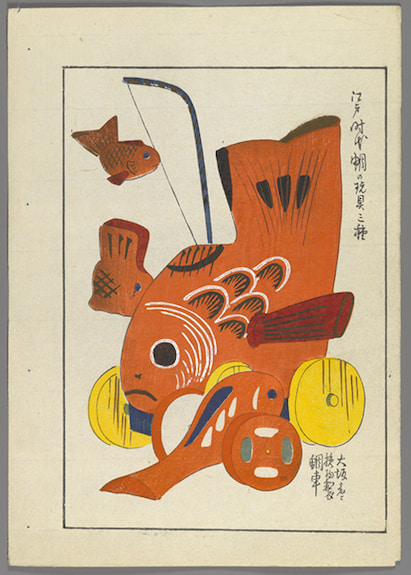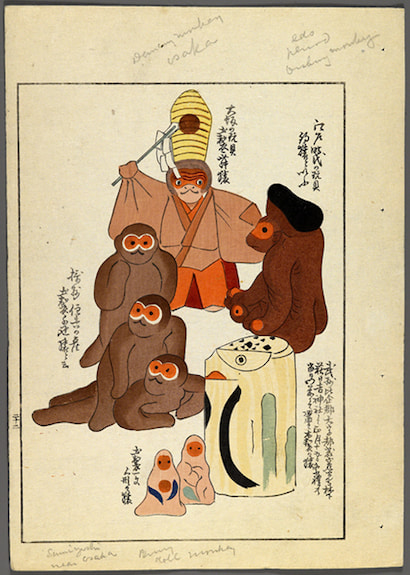Artist Birthday: Shimizu Seifu
The Chinese had a legend of the brave carp who swam against the current on the Yellow River to mate, and few were courageous enough to swim over the Dragon Gate waterfall. Those that did turned into dragons. This myth spread to Japan eventually, and ultimately, the carp was considered an auspicious fish because of its perseverance and bravery. The fish became a symbol of samurai which considered those traits that they possessed. It was a popular subject of Ukiyo-e prints in Japan as well as painting.
Artist birthday for February 10th: Shimizu Seifu (1851–1913, Japan)
Seifu Shimizu was a woodblock artist and a toy scholar, referred to as “Professor of Toys” because of his vast knowledge. He executed color woodblock prints in the Ukiyo-e style.
 |
| Shimizu Seifu, Carp Toy, from the 10 volume series A Child's Friends (Unai no tomo), 1891-1923. Color woodblock print on paper, 8" x 5 ⅝" (20.3 x 14.3 cm). Image © 2025 Brooklyn Museum. (BMA-3682) |
Seifu Shimizu was a wealthy trader, student of Japanese folklore, and artist who was known as the "professor of toys." He himself was an expert on traditional Japanese folk toys, and had a massive collection. This collection was documented in the ten-volume "Unai no tomo" ("The Child's Friend"), woodcut prints that Shimizu himself produced for the first six volumes.
Shimizu's history with Japanese folk toys was extensive. In 1880 he founded the "Hobbyhorse Club," a group dedicated to advancing the enjoyment and study of traditional Japanese toys. In 1906 he curated the first ever exhibition (called Children's Exhibition) of Japanese folk toys , many of the items from his collection.
In 1909, Shimizu founded the Odomokai (Adult's or Connoisseur's Club) that was influential in advancing knowledge of folk toys, and was one of the movements that helped inspire the craze for Mingei (ordinary people's crafts), the genre of hand-made, cheap material everyday objects and toys that evolved during the 1920s.
 |
| Shimizu Seifu, Monkey Toys, from the 10 volume series A Child's Friends (Unai no tomo), 1891-1923. Color woodblock print on paper, 8" x 5 ⅝" (20.3 x 14.3 cm). Image © 2025 Brooklyn Museum. (BMA-3681) |
The evolution of the monkey in Japanese thought and literature has been, overall, ambiguous. Quite early on, monkeys were believed to be clever, and were actually believed to be messengers of the gods. In the Shinto religion, however, monkeys came to be seen as regrettable, vain and gullible, all human traits, and thus symbolic of human beings lack of true understanding of the divine. This group of monkey toys contains interpretations of the only indigenous monkey in Japan, the red-faced macaque. The macaque is a community oriented monkey, once again, a very human trait, particularly in Japan.

Comments